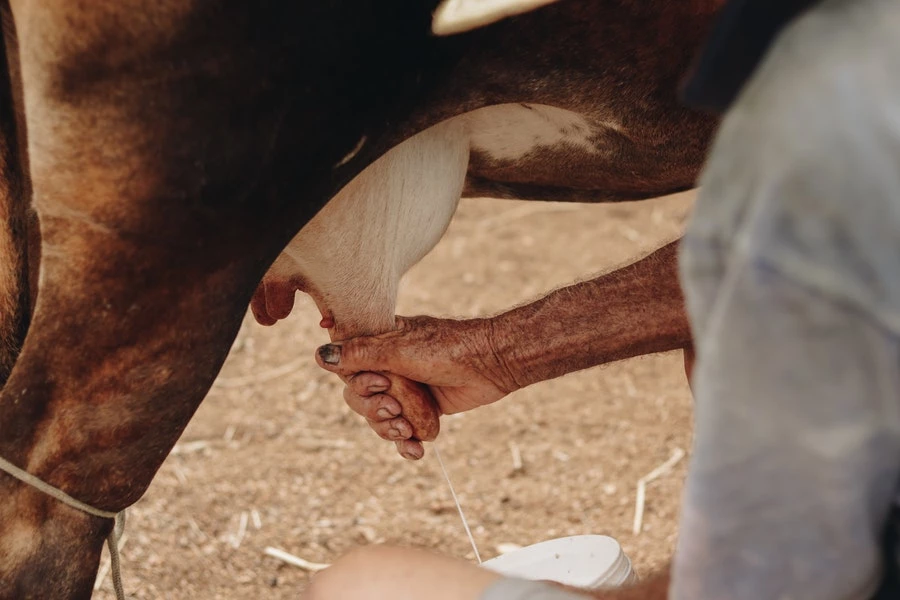
Hand milking has become a growing problem in today’s agricultural world. Dairy animals are bred to have smaller teats that are designed specifically for milking machines. Unless your forearm strength is legendary, you’ll probably want to invest in a portable milking machine.
Before you drop the money on a portable milking machine, there are a few factors that you need to consider. Don’t worry though. We’ve got you covered.
Portable Milking Machines Come In Different Shapes And Sizes
The size and type of milking machine you choose depends on your exact needs. Most notably, the type of animal you are planning to milk will weigh heavily on this decision. Next, consider how much milk you want to produce within a specific timeframe.
For instance, some milking machines are designed with two pulsation rates in order to accommodate cows. Their teats produce milk at different rates. So having different speeds for each set will improve efficiency and is healthier for the cow.
Another factor to consider is how the milking machine is powered. Many portable options will use either battery (electric) or combustion (gas powered) to operate.
The Three Essential Considerations
In addition to the type of animal, there are also other considerations that must be made. Let’s take a look at them.
- Number of Teats: Different breeds will have a different number of teats so you need to factor this into your decision. For instance, if you only plan to milk a goat, then there’s no reason to buy a milking machine with four attachments.
- Size of Teats: Many models come with attachments to accommodate for sizes but you still need to confirm that the portable milking machine you choose is the right size for your animal.
- Rate of Pulsation: Since goats, sheep, and cows all have different size udders, they release milk at different rates. Thus, they require machines with different pulsation rates. Also factor the type of animal into this. For instance, sheep release milk much faster than goats.
Are There Health Concerns?
Following proper hygiene practices is important, so always consider the difficulty of cleaning the milking machine. You will be cleaning it after every use. This is the only way to ensure the health of the animal and the integrity of the milk.
Hygiene is the number one health concern with using milking machines. If you don’t clean it after use, then it can infect the udders of your precious animal. This can even lead to contagious diseases like mastitis.
Furthermore, look for machines that provide spray options both before and after the milking process. But don’t skip manual sanitization even when spray options are available.
Cost
This is where things get tricky. There are a lot of milking machine models floating around the online world. The problem with a lot of the cheap options is that they are extremely low quality. You might save 30% to 40% initially but that savings comes with a pretty hefty price tag when you factor in longevity. Many of these cheap models break after a few uses. Furthermore, they have small holding capacity and lack proper pulsation. They put the animal’s udders at risk too.
What good is it to save a few hundred bucks when the machine has all of those issues? Invest the extra money now and avoid those problems altogether.
Essential Features Of A Milking Machine
Okay now that you have all of the basic information about portable milking machines, let’s take a look at the two most essential features. A good milking machine must possess both of them.
It Must be Food Grade Quality
Some cheaper models take shortcuts that are not documented on the product info page so you must pay close attention. Milking machines should have no noticeable welding spots, no rubber, and no rust. All of these will contaminate the milk and risk the health of your animal. Portable milking machines should be made of stainless steel, so it’s guaranteed not to rust.
It Must have a Pulsator
Top-quality milking machines will have a pulsator that protects the health of your animal. Cheap models tend to skip out on this essential feature. Machines without pulsation create a constant vacuum without any relief. This is not healthy for the animal. A pulsator simulates the squeeze and release action.
Final Thoughts
With that said, the most important considerations are the health of your animal and the quality of milk. Both are worth spending extra money on so be sure that you avoid low-quality, cheap milking machines.
Finally, follow the instructions that come with your milking machine. Hygienic practices and proper use are essential.








